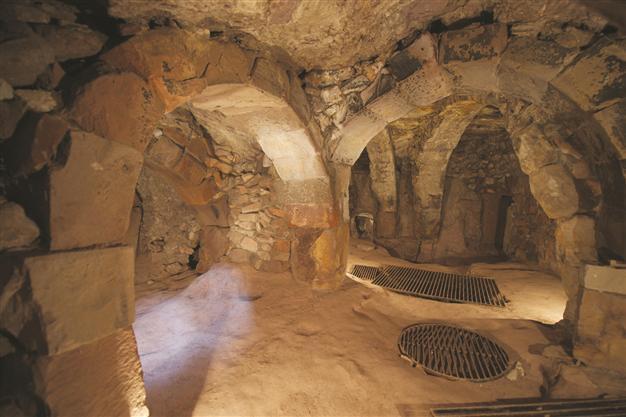Architect Sinan’s house bringing in tourists to small town
KAYSERİ - Anadolu Agency

Mimar Sinan’s House in Ağırnas is a 4,505-square-meter closed area with spaces underground. The house was restored three years ago and now open to tourism. AA photo
The house where Mimar Sinan was born and grew up in the Central Anatolian province of Kayseri’s Ağırnas neighborhood is becoming a tourist destination in the region for people interested in seeing the roots of the Ottoman Empire’s most famous architect.Mimar Sinan was the head architect in the Ottoman Empire for nearly 50 years, putting his stamp on some of the empire’s most famous buildings. His house in Ağırnas, 27 kilometers away from Kayseri, is one of the main draws helping promote the small district. After some restoration work, the house has taken a prominent place on tourists’ itineraries.
A municipal police officer, 43-year-old Mustafa Özçelik, voluntarily welcomes and guides people who want to visit the house.
Relating one story from 3.5 years ago, Özçelik said: “I was sent by the municipality to welcome the first guests to the house. I did not have a mission like this. The guests were a academic couple. They were talking about Mimar Sinan. They asked a few questions and I could not answer. They asked me whether I was a local of Ağırnas. When I said yes, they found it strange. I felt very sorry because I could not answer questions about Mimar Sinan even though I am a local. The world knows him, but I didn’t. Then I studied just like preparing for university exams. I learned about him from various resources. Now I share my knowledge with people visiting the house. The academic couple visited the house once again and was surprised by my knowledge about him. I can answer all questions about Mimar Sinan.”
A guide for state officials
Complaining about misinformation about the life of Mimar Sinan, Özçelik said he learned about him from “Tezküretü’l Bünyan” and “Tezküretü’l Ebniye,” two Ottoman-era texts that include important information about the architect, as well as reading books by Afet İnan, a late Turkish historian and sociologist.
He said he was now guiding many guests through the house. “I am proud of this mission. I guided President Abdullah Gül in 2011. His bodyguards were hesitant at first since I am a municipal police officer, but I persuaded them with a good presentation. I also guide many state officials visiting the town. I am continuing to do my own job while serving as a guide.”
Özçelik said the house where Mimar Sinan was born was a 4,505-square-meter closed area with spaces underground.
“The house was restored three years ago with the contributions of institutions. Documents show that the house was built in the 1400s. The upper part of the house is not the place where he was born. It is the place where his grandchildren lived. He was born and lived in the lower part. Besides a living area for a family, there is an underground part or a cellar. Food was kept there or people hid from enemies there. These underground parts exist in all houses here. We display some of the works by Mimar Sinan and some of his belongings,” Özçelik said. “Ağırnas is known for its stonemasonry. Many architects were born here and the most famous one if Sinan.”
















